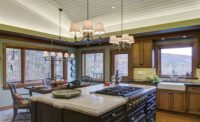Those acquainted with Jon know that he is dedicated to the stone industry. Through the years he has gotten involved with the MIA, and more recently, with its Safety Committee, which was launched in 2010.
Jon explained that when Jim Hieb, MIA Executive Vice President and CEO, first approached him about joining the newly formed Safety Committee, he thought it was a great idea. "Jim said they were looking for new volunteers and encouraged me to get involved," he explained. "There's a lot to be said about sharing information. Some of the biggest names in the business sit shoulder to shoulder. It's a forum where members put aside their differences and work together to better our industry."
Since its conception, the Safety Committee has grown to include 23 member companies. As you will read in the news item, "MIA Safety Committee announces new chairman," the committee has created a successful way to bring the industry together to address issues that affect everyone.
Safety should be treated as a priority in every aspect of stone production.
In the "Shop How-to" section of this edition of the Stone Fabricator E-Newsletter, Buddy Ontra, owner ofOntra Stone Concepts, writes about his observations and best practices that he believes should be considered when working in the "second shop" -- the customer's home.
"Changes can happen at a jobsite between templating and installation," explained Ontra. "Many are out of our control, such as trash or dumpsters blocking our path, holes or ditches can appear, stairways disappear or walls are built. What we can control is how we adapt to the job environment. Simply checking for traffic obstacles, hidden wires or pipes, carrying a snow shovel to the job on those days after a storm, and communicating to our customer, homeowner or contractor what our needs are to ensure a safe environment, can make the difference between a trip to the emergency room and a comp claim, or everyone returning to the shop in one piece and another beautifully completed countertop installed."
Those who are already involved and keep up on the latest safety standards and procedures should continue to do so. And hopefully with education on the subject becoming more prevalent, it will offer encouragement to those who haven't been as diligent to improve upon the safety in their work environment -- both inside and outside of the shop.





